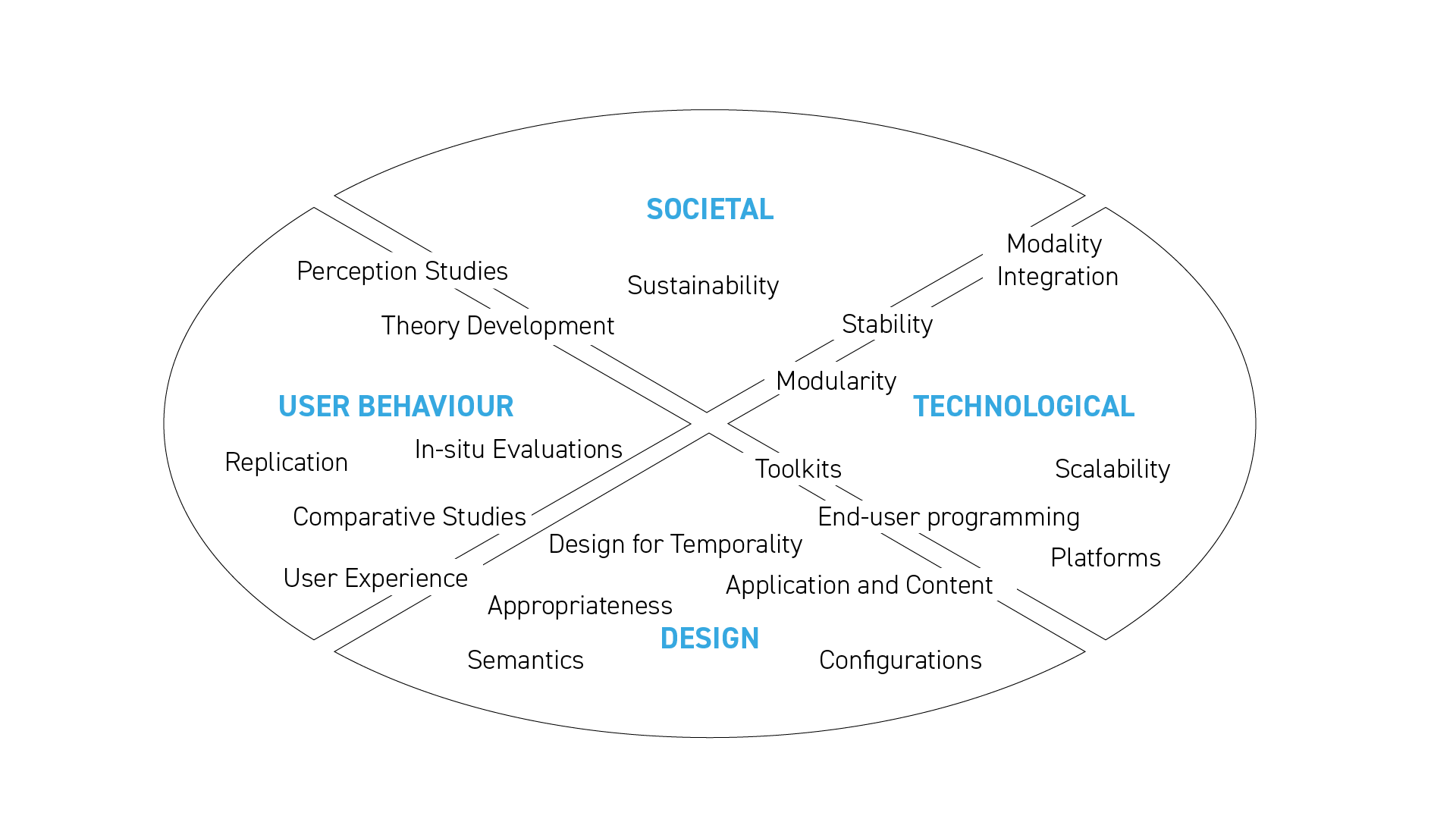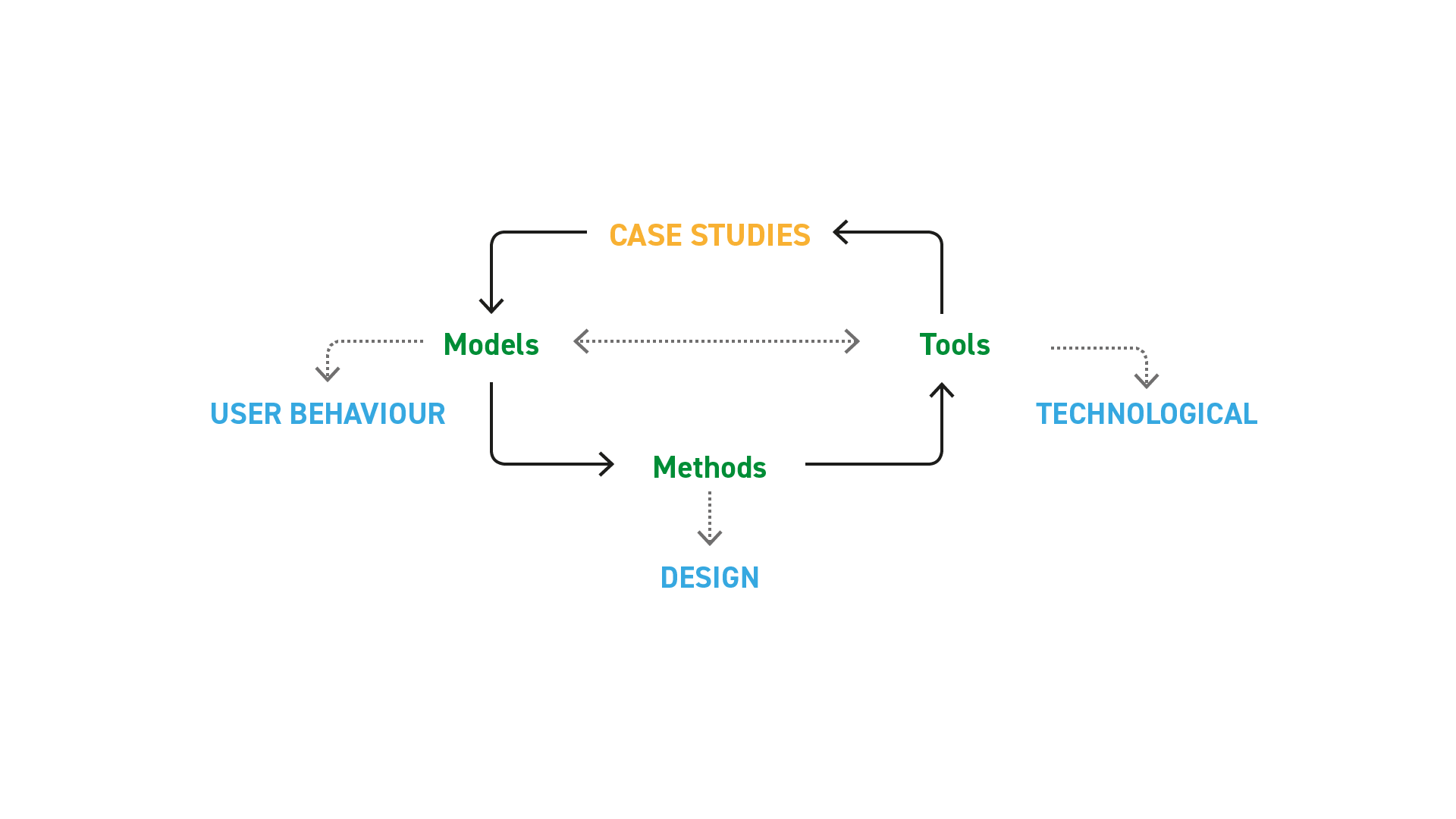Procedure
Table-of-contents
Introduction
As the vast list of different prototypes (cf. Related Work) shows, the research field of Elastic Displays (and Shape-Changing Interfaces in general ) consist of many different concepts and a wide variety of approaches. However, there is little continuity, meaning that most researchers start from scratch with their own technology, and after publication the concepts gets abandoned. Other researchers don’t have access to the concrete implementation, and even if so, the different technological approaches make it difficult to build on existing prototypes. As a result, the question of the comparability of the various technological approaches and the resulting solutions can also be raised.
Ultimately, the fragmentation of the research field and the lack of continuity make it difficult to develop solutions that go beyond the status of a proof-of-concept. Our work addresses this problem by providing a common technological basis with the aim of focusing on researching content-related issues and facilitating comparability between different concepts as well as the reusability of results and research based on previous work.
Grand Challenges for Shape-Changing Interfaces
The chosen approach can be illustrated very well using the “Grand Challenges for Shape-Changing Interfaces” presented by Alexander et al. [1]: They mentioned 4 different key areas, that need to be addressed by research on Shape-Changing Displays:
The following graphic shows the Grand Challenges, together with the aspects that are directly addressed by our research:

Tools - Methods - Models
Our research addresses technological aspects by developing and providing tools that simplify the process of creating applications for Elastic Displays. Research on the design is addressed by describing methods. The understanding of user behaviour is facilitated by different models. The societal issues are not directly part of our research. However, there are a number of facets that have a significant influence on this dimension.

The chosen methodology is based on application-oriented research. By creating various example scenarios and a variety of case studies, different facets can be examined and the the individual key areas are iteratively refined.
References
[1] Alexander, J., Roudaut, A., Steimle, J., Hornbæk, K., Bruns Alonso, M., Follmer, S. and Merritt, T. (2018): Grand Challenges in Shape-Changing Interface Research. In: Regan Mandryk, Mark Hancock, Mark Perry and Anna Cox (Ed.): Proceedings of the 2018 CHI Conference on Human Factors in Computing Systems. CHI ‘18: CHI Conference on Human Factors in Computing Systems. Montreal, QC, Canada, 21.04.2018 - 26.04.2018. New York, NY, USA: ACM. DOI: 10.1145/3173574.3173873
